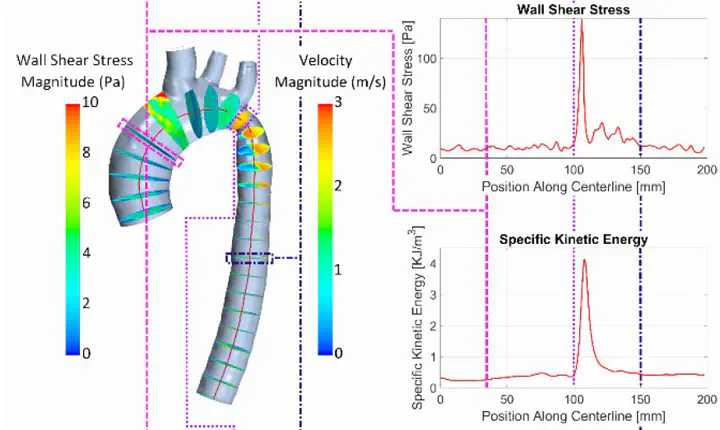Deep Learning Based Centerline Aggregated Aortic Hemodynamics: An Efficient Alternative to Numerical Modelling of Hemodynamics

Abstract
Image-based patient-specific modelling of hemodynamics are gaining increased popularity as a diagnosis and outcome prediction solution for a variety of cardiovascular diseases. While their potential to improve diagnostic capabilities and thereby clinical outcome is widely recognized, these methods require considerable computational resources since they are mostly based on conventional numerical methods such as computational fluid dynamics (CFD). As an alternative to the numerical methods, we propose a machine learning (ML) based approach to calculate patient-specific hemodynamic parameters. Compared to CFD based methods, our approach holds the benefit of being able to calculate a patient-specific hemodynamic outcome instantly with little need for computational power. In this proof-of-concept study, we present a deep artificial neural network (ANN) capable of computing hemodynamics for patients with aortic coarctation in a centerline aggregated (i.e. locally averaged) form. Considering the complex relation between vessels shape and hemodynamics on the one hand and the limited availability of suitable clinical data on the other, a sufficient accuracy of the ANN may however not be achieved with available data only. Another key aspect of this study is therefore the successful augmentation of available clinical data. Using a statistical shape model, additional training data was generated which substantially increased the ANNs accuracy, showcasing the ability of ML based methods to perform in-silico modelling tasks previously requiring resource intensive CFD simulations.